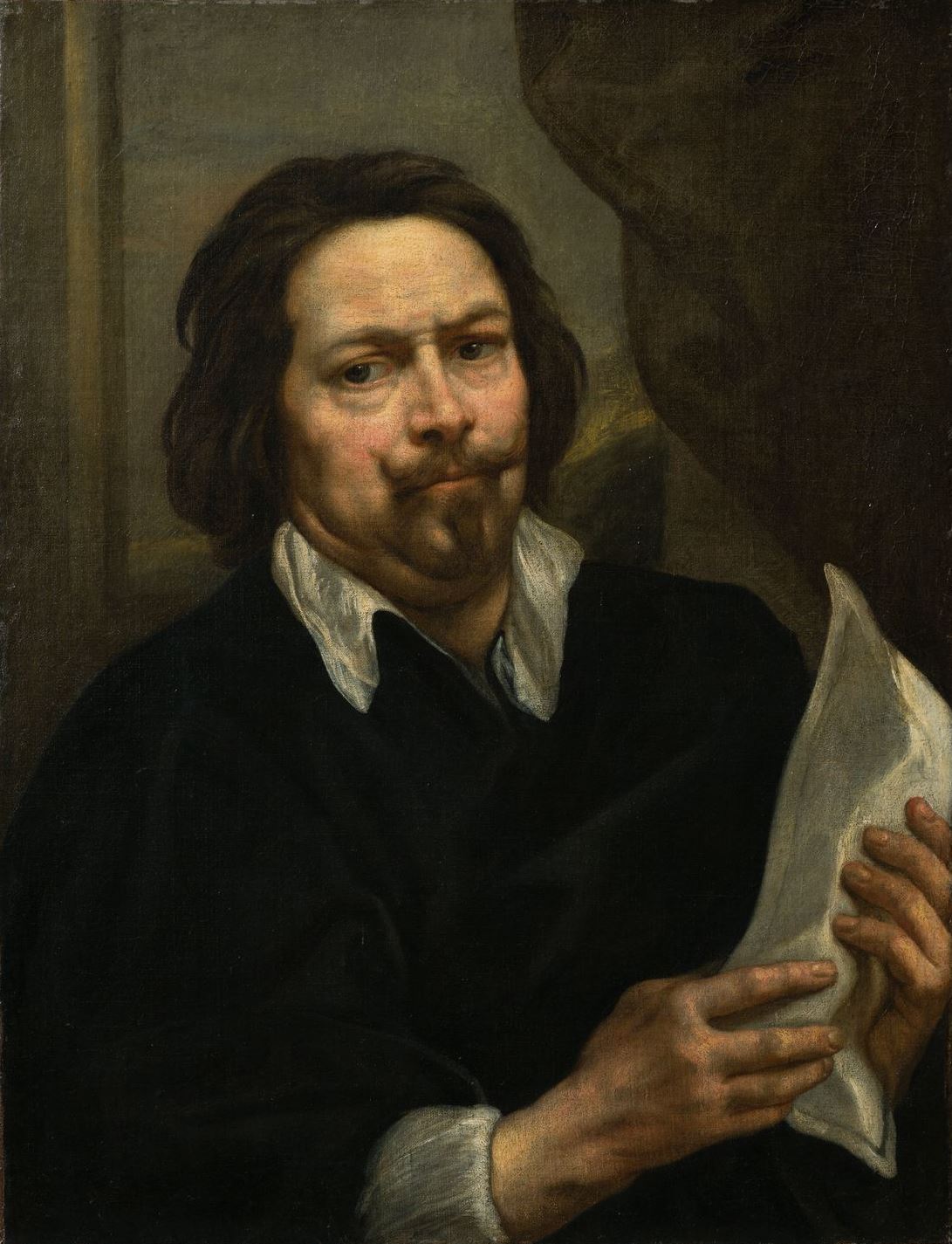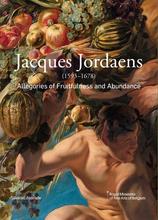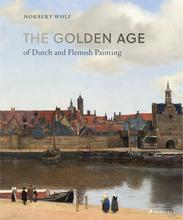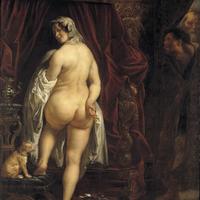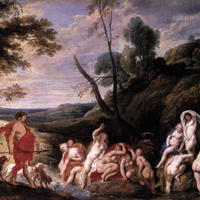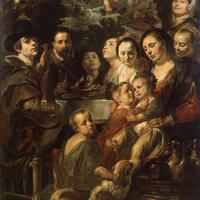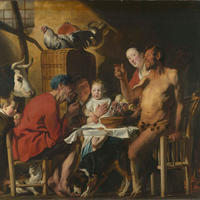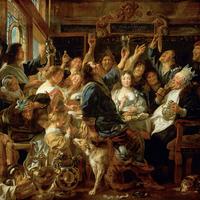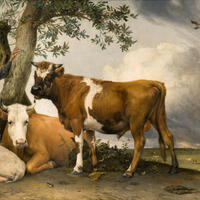More about Jacob Jordaens
- All
- Info
- Shop
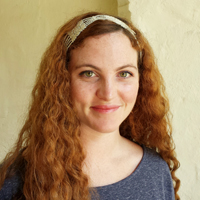
Sr. Contributor
Influenced by Rubens and influencer of Jan Steen, Jacob Jordaens is the middle child of Flemish painting.
Despite obvious talent, people only gave Jordaens attention when Rubens wasn’t around. Rueben’s has gout let’s call Jordaens!… to use Rueben’s sketches to complete his commission for the Cardinal-Infante Ferdinanrd. Oh, someone needs to finish the Queen’s Greenwich chambers! Jordaens is great at following Ruben’s designs! Even after becoming the #1 artist in Antwerp (following Ruben’s death in 1640, of course) Jordaens was stuck in Ruben’s shadow, finishing his Hercules and Andromeda commission for Philip IV of Spain.
It may have taken Jordaens a while to get to the top, but he didn’t seem to mind taking the scenic route. He was the first of eleven children born to a rich linen merchant who would later hook him up with cheap canvases. He studied with the same teacher, Adam van Noort, for eight years and eventually married his eldest daughter. By all accounts he was a productive and happy man… except for the whole religious persecution thing.
You see, Jordaens was born a Catholic (to this day approximately 75% of the city’s population identifies as Catholic) in 1593, the Protestant Reformation hit Antwerp with violent protests in 1566 and the Eighty Years’ War began in 1568. In other words, Jordaens lived in a time and place that constantly questioned religion, the rights of the governed, and the excess of those governing. When Jordaens converted to Protestantism towards the end of his life, Antwerp was still under Spanish occupation (the Inquisition was still very much a thing mind you). Whether it was due to his artistic reputation, or the fact that he continued to accept commissions for Catholic churches he managed to avoid any severe punishments for his beliefs. This doesn’t mean that he kept his head down, he was fined 200 pounds for heretical writings, and many art historians point to satire in his works.
Featured Content
Here is what Wikipedia says about Jacob Jordaens
Jacob (Jacques) Jordaens (19 May 1593 – 18 October 1678) was a Flemish painter, draughtsman and a designer of tapestries and prints. He was a prolific artist who created biblical, mythological, and allegorical compositions, genre scenes, landscapes, illustrations of Flemish sayings and portraits. After the death of Rubens and Anthony van Dyck, he became the leading Flemish Baroque painter of his time. Unlike those illustrious contemporaries he never travelled abroad to study the Antique and Italian painting and, except for a few short trips to locations elsewhere in the Low Countries, he resided in Antwerp his entire life. He also remained largely indifferent to Rubens and van Dyck's intellectual and courtly aspirations. This attitude was expressed in his art through a lack of idealistic treatment which contrasted with that of these contemporaries.
His principal patrons were the wealthy bourgeoisie and local churches. Only late in his career did he receive royal commissions, including from King Charles I of England, Queen Christina of Sweden and the stadtholder class of the Dutch Republic. As well as being a successful painter, he was a prominent designer of tapestries and prints.
While he is today mostly identified with his large-scale genre scenes such as The King Drinks (also called the Feast of the Bean King) and As the Old Sing, So Pipe the Young, his contemporary reputation was based as much on his numerous mythological, allegorical and biblical scenes. Often regarded as a pupil and epigone of Rubens, he was never recorded as a member of Rubens' workshop. He regularly worked as an independent collaborator of Rubens. The principal influence of Rubens on his work is the use of the chiaroscuro technique which Rubens himself had mastered through his study of Caravaggio's paintings during his stay in Italy. His main artistic influences, besides Rubens, were northern Italian painters such as Jacopo Bassano, Paolo Veronese, and Caravaggio.
Check out the full Wikipedia article about Jacob Jordaens

